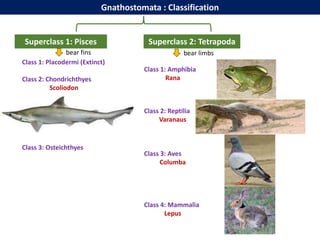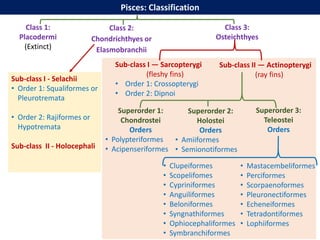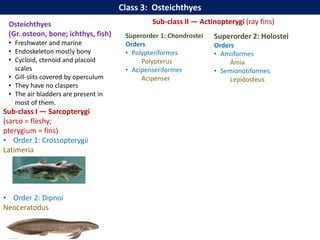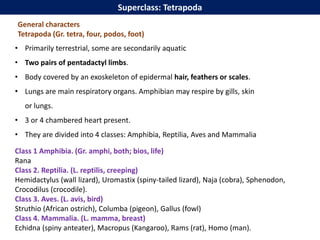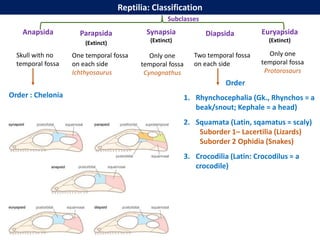Tetrapods include four classes: Amphibia, Reptilia, Aves, and Mammalia. They are characterized by having two pairs of limbs. Amphibians like frogs live both on land and in water and have moist skin. Reptiles like lizards have dry scaly skin and lay shelled eggs. Birds have feathers, beaks, and lay hard-shelled eggs. Mammals are defined by having hair and mammary glands and give live birth to their young. These four classes diverged from a common ancestor and adapted to live on land.
